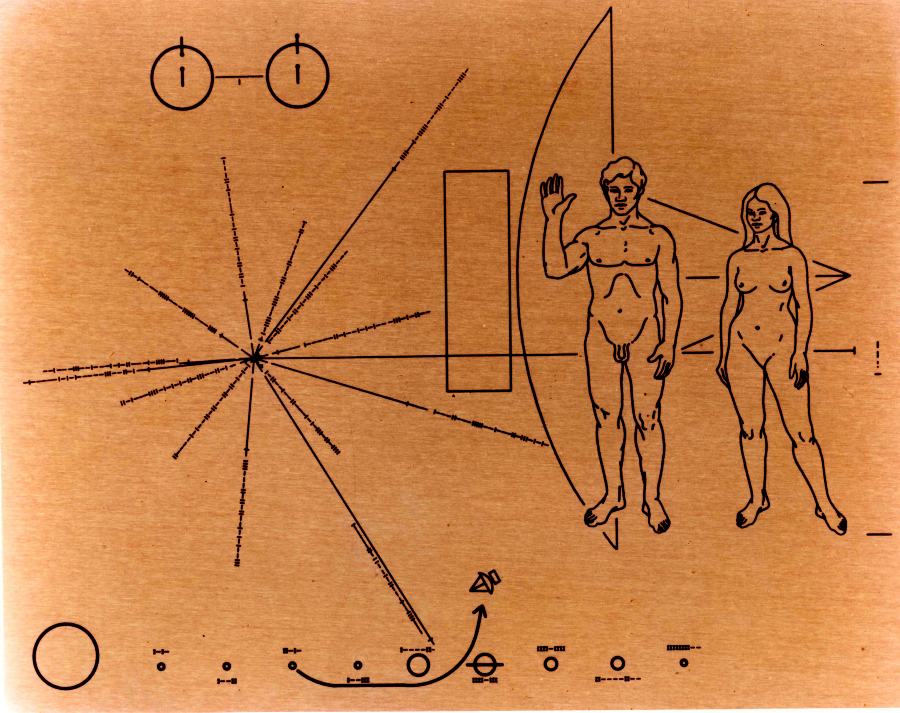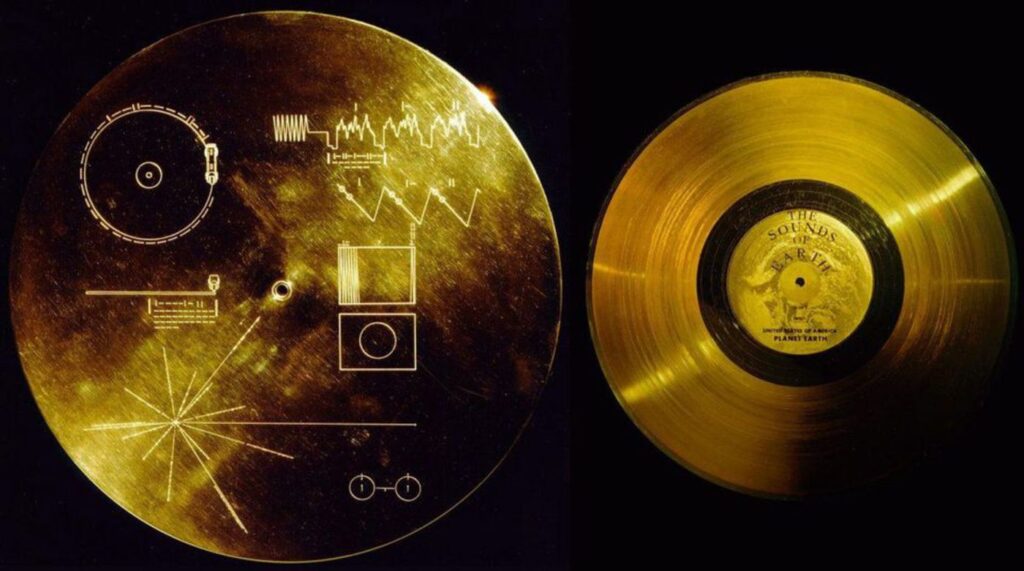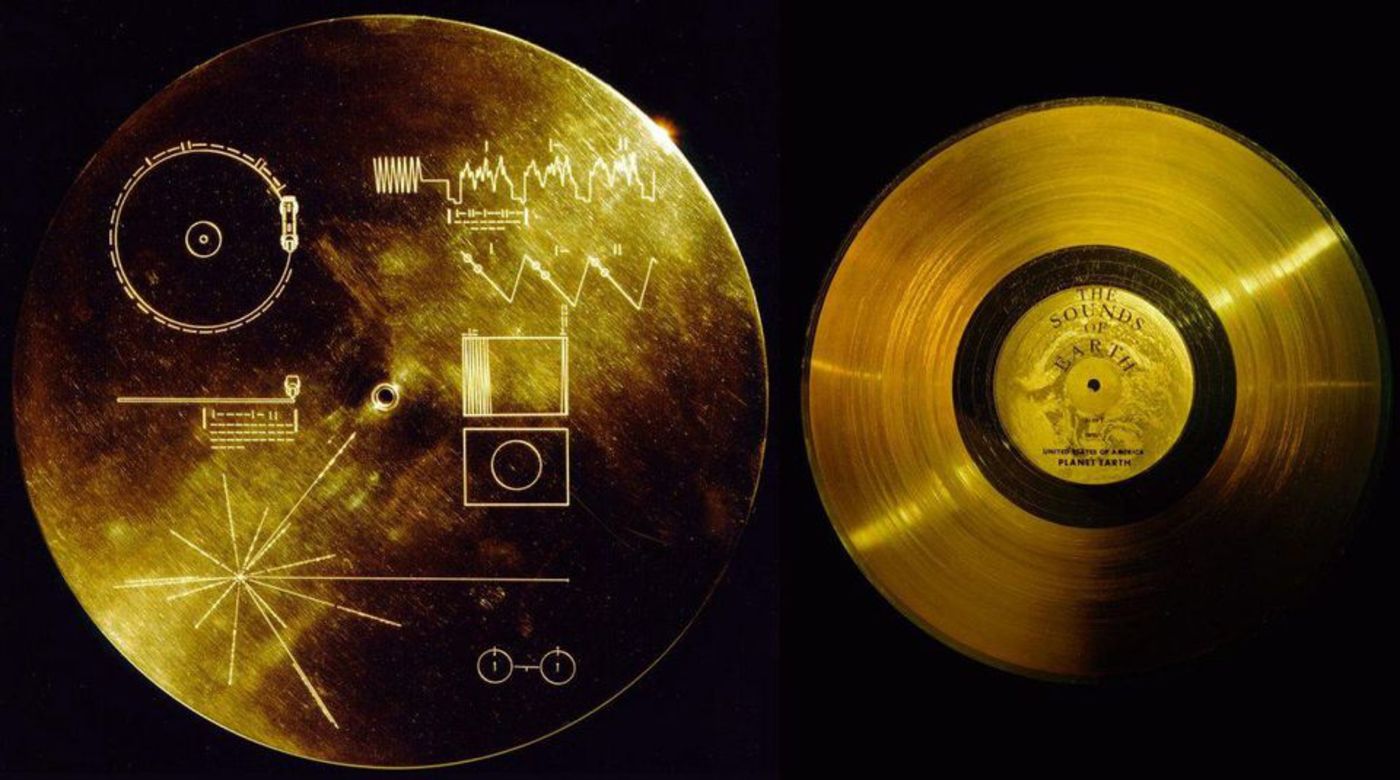Half a century ago, NASA scientists shot a map into space that contains the position of Earth for aliens to find—but it won’t always be accurate.
However, the daughter of the man who made that map is ensuring the next one will remain accurate not just for a few million years, but for a billion years.
How it began
In December 1971, NASA was excitedly preparing to launch the Pioneer 10 capsule that would not only study Jupiter for the first time, but set a path to drift out of our solar system.
As Pioneer 10 would likely be the first earth-made object to ever be discovered by aliens, the American astrophysicist Carl Sagan thought we should leave a message on board. His colleague Frank Drake thought we should send a map onboard as well.
So Sagan and Drake came up with a famous image—a line drawing etched into a gold-anodized aluminum plate that depicted the male and female frame, with the male waving in what would hopefully be construed as a gesture of good will. It also depicted a simple diagram of our solar system, and galactic coordinates for Earth.

A special moment
The launch was one of those moments in history that for many turned the volume down on everyday things like the stock market, election season, the school year, or problems at work—the kind of moment that caused people from all walks of life to gather around and say “wow, that was special.”
However the galactic coordinates method, albeit brilliant at the time, which Drake used to formulate the position of Earth, has a limited number of years to work. The method uses pulsars: the leftover body from a supernova explosion. Pulsars are very bright and spin at incredibly fast speeds. They’ve also been theorized to be the most effective points by which to navigate space, as the timing of their rotations, and the radio frequency their spinning creates, are constant and reliable for periods of millions of years.
Only a handful of these pulsars were known in Drake and Sagan’s time, and so their options were limited. But as Nadia Drake, Frank’s daughter, explains in her story for National Geographic, pulsars do slow down over time, removing their eventual usefulness as waypoints.
LOOK: The Inspiring and Playful Hidden Message in the Mars Perseverance Rover’s Parachute
Each line etched onto the gold-aluminum plate detailed the pulsars’ placement with respect to Earth, while the lines themselves were drawn in a binary code which would allow any space-fairing intelligent race to calculate the rotational speed of each one.

This would also allow aliens to figure out how long ago the message was sent, because they could measure the rotational decay of the pulsar in years based on the speed during 1971 and at the time the message was found.
However this was also the map’s downfall, because the slowing down would effectively inhibit aliens from figuring out which pulsars Drake and Sagan were using.
A family business
One of the world’s “most prolific pulsar astronomers” is also Nadia Drake’s husband, and he was able to use the same method, but with more consistent “binary pulsars,” to draw a new map that could be reliably decoded for billions of years.

The binary pulsars, also known as millisecond pulsars, sit in dead orbits that won’t change even after billions of years. They spin much faster and last much longer. Scott Ransom, Nadia’s husband, also used pulsars that orbit Milky Way in what are called globular clusters.
Orbiting beyond the reaches of our galaxy, globular clusters are like millisecond pulsar factories, and shine beautifully through space telescopes. They’re fascinating places, and act as much better signposts for would-be aliens searching for our planet—even as the positions of the stars within the Milky Way alter and shift.
Finally, our concept of time and distance would be foreign to any aliens, so like Frank Drake, Ransom included the detailed chemical structure of hydrogen—the most plentiful element in the universe.
When hydrogen electrons change the direction of their spin, they release a radio wave. By comparing the speed of the radio wave to the speed of light, the map offers a new way to calculate both time and space that any race clever enough to pick out a silent spacecraft like Pioneer 10 would be able to decode.
CHECK OUT: A New ‘Super Earth’ Has Been Discovered Near One of Our Galaxy’s Oldest Stars
The result is a map that is readable by any space-fairing race.
SHARE This Fascinatingly Far-Out Story With Friends on Social Media…




















